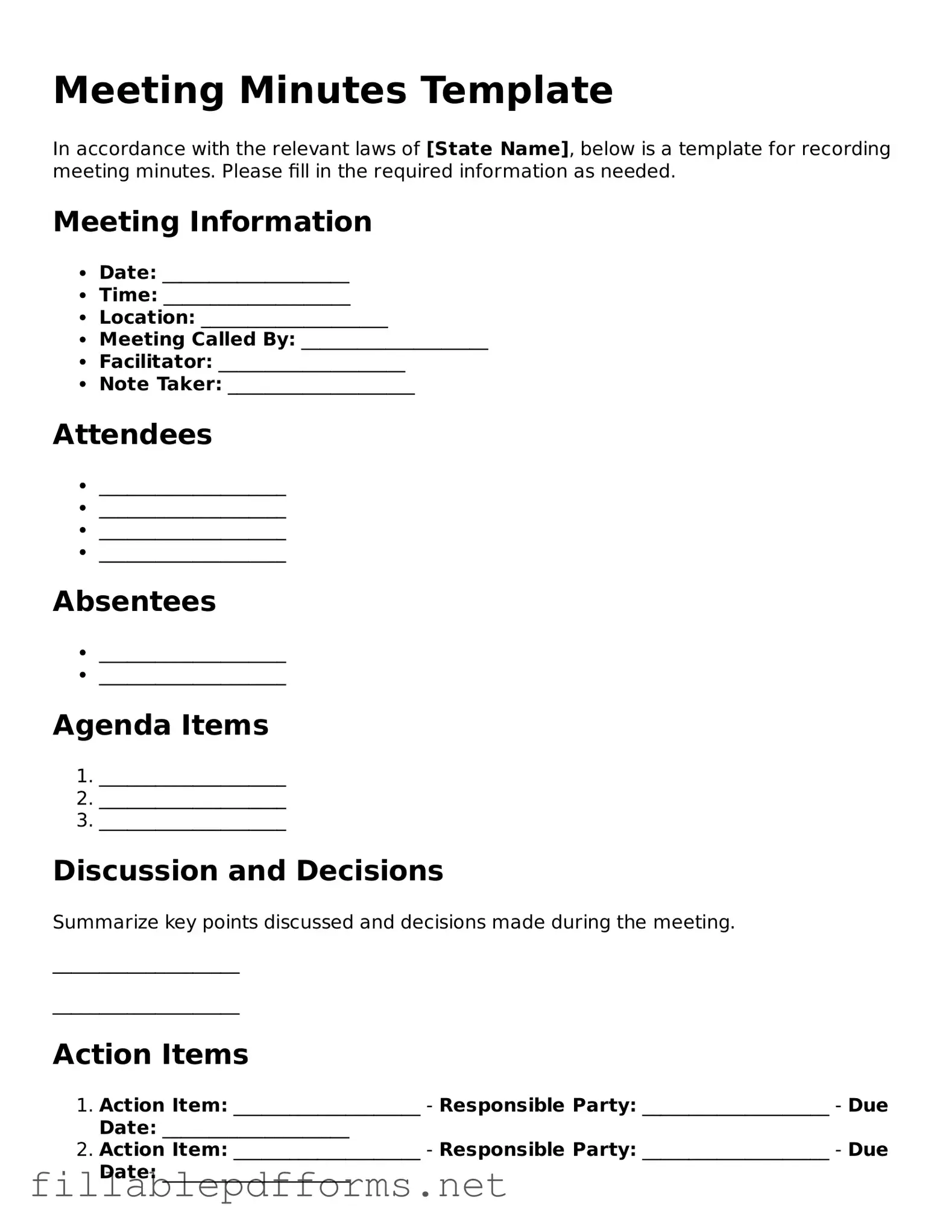In any organizational setting, effective communication and documentation play crucial roles in ensuring that meetings yield productive outcomes. The Meeting Minutes form serves as a vital tool in this process, capturing essential details that may otherwise be overlooked. This form typically includes sections for the meeting date, time, and location, providing a clear context for the discussions that took place. Additionally, it lists attendees, allowing participants to recognize who was present and who contributed to the conversation. Key agenda items are documented, highlighting the topics discussed and the decisions made, which can be invaluable for follow-up actions. Furthermore, the form often contains a space for recording action items, assigning responsibilities, and noting deadlines, thus facilitating accountability among team members. By maintaining a structured approach to documenting meetings, the Meeting Minutes form not only helps in tracking progress but also fosters transparency and collaboration within the organization.
